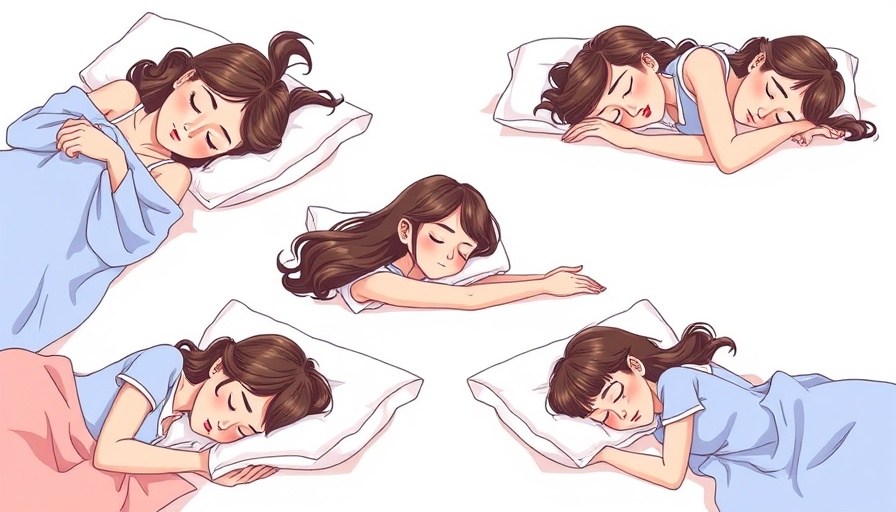
Understanding Sleep Positions: What They Say About You
Recent research from the Better Sleep Council suggests that the way you sleep could reveal more than just your comfort preferences; it may also provide insights into your health, age, and education level. This connection illuminates intriguing correlations that extend beyond a mere nightly routine.
The Insightful Patterns of Sleep
The study indicates that sleep positions are surprisingly linked to various personal attributes. For instance, individuals with higher education levels, particularly those who have attended graduate school, tend to favor positions other than the Fetal position, which is the most widely adopted amongst Americans. In fact, 47% of participants reported sleeping in this position.
Generational differences also emerge from the data. Millennials and Gen Xers prefer the Freefall position, characterized by arms and legs outstretched, while Baby Boomers seem to stick to more traditional positions. This generational divide could imply that cultural shifts influence our sleeping habits as much as they do our daily behaviors.
Age and Gender: The Sleep Connection
Interestingly, age has a notable impact on sleep styles. Younger generations are more likely to adopt more unconventional positions, while older generations gravitate towards classic styles that offer a sense of security. Moreover, gender plays a role in position preferences. The study found that women are more inclined to sleep in the Fetal position than men (54% versus 39%), indicating potential influences of comfort and emotional security.
Sleep Quality Across Different Positions
Not only do these positions reflect personality traits, but they also impact sleep quality. People who sleep in the Log position—lying on one side with arms and legs straight—tend to report better rest compared to those in the Fetal position. This suggests that not only is the choice of sleep position a personal one, but it also intertwines with the quality of sleep obtained, which is crucial for optimal health and wellness.
Sleep Disorders: Can They Be Influenced by Sleep Position?
Moreover, individuals who identify with the Starfish or Log positions are reportedly more prone to sleepwalking. This raises questions about whether certain positions could predispose individuals to sleep disorders or disrupt sleep cycles. Understanding these patterns can be vital for individuals looking to enhance their nighttime rest.
Practical Tips for Improving Sleep Quality
Sleep experts, like Terry Cralle of the BSC, advise specific changes to enhance sleep based on identified sleep positions:
- Back Sleepers: Those who sleep in a Soldier or Starfish position may experience back pain or sleep apnea. Placing a pillow under the knees can help align the spine.
- Stomach Sleepers: Freefallers may need to reduce neck strain by opting for softer pillows to avoid awkward head angles.
- Side Sleepers: Side positions like Log, Yearner, or Fetal are encouraged for uninterrupted sleep, making them a popular choice for comfort seekers.
Community Health and Wellness Insights
These findings pertain not just to individual comfort but ripple out to community health trends. In areas such as San Antonio, where community health and wellness is at the forefront, understanding sleep patterns can inform broader wellness initiatives. Local health and wellness centers could utilize these insights to promote better sleeping habits as part of a holistic approach to health.
Final Thoughts: The Role of Sleep in Health and Wellness
As our understanding of sleep evolves, it becomes increasingly clear that it is a window into our overall well-being. The way we sleep can provide invaluable clues about our health, lifestyle, and even our place in society. It is essential to consider these insights as part of our journey towards optimal health and wellness.
Consider visiting local health and wellness events to explore more about how sleep affects your physical and mental well-being.
 Add Element
Add Element  Add Row
Add Row 



Write A Comment